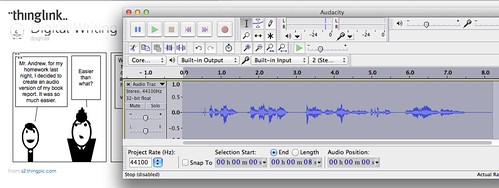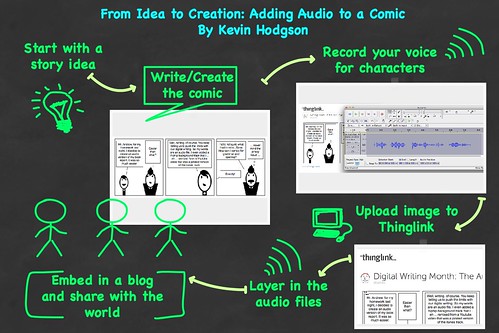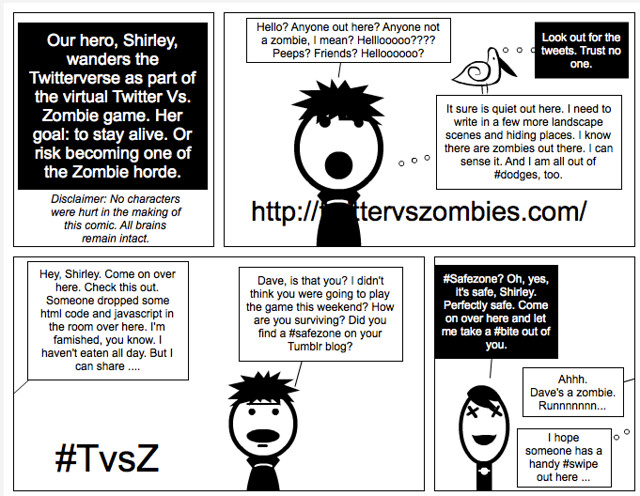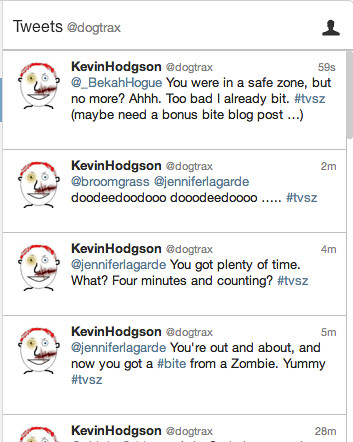CLICK ON THE CIRCLES TO CALL UP THE AUDIO

The other day, as I was working with Thinglink on a media piece about digital writing (you can still see what I did and add your own thoughts) for Digital Writing Month, I had this brainstorm of using the site to add an audio track to a comic strip.
So, I did it.
Actually, the process became a bit more complicated than I first thought. Here’s what I ended up doing, and try to view the process through the lens of digital writing. In this case, I was thinking of the audio engineering as ‘writing’ and how I worked to manipulate, and then embed my voice, was part of the compositional process. I can’t make it all visible here, but it had me thinking and working/reworking the concept I started with.
First, I decided that the comic should include an audio storyline, so that the content of the comic would coincide with the ways I was composing the piece. I decided that one of the kids would turn in a report, all as an audio file, and this would cause the teacher to struggle over ideas of traditional grading.

Second, I opened up Audacity. I read through the speech bubbles. I began by creating a file, and then creating a second file, for the same character, but ran into problems when I began to change the pitch with some Audacity tools — in order to give the kid a higher voice and the teacher a lower voice. After one round of recording Dave in the first frame, I could not match his voice pitch for the second frame. Ack. I went back to square one, and deleted all of my work, starting over again. This time, I made one master file with all of Dave’s speech, added the pitch change, and then tinkered with cutting/pasting editing of that one master file to create MP3 files that all had the same pitch.
I did the same method for the teacher, but here I had a little conundrum: the thought bubble. I knew that the voice should change — the voice in our heads is different from the voice that comes out of our mouth — and decided that adding some echo/reverb might aurally indicate the thinking of a character, as opposed to the talking. I think those words got a bit muddled on me. Later, I thought about how I should have tweaked that a bit more. Oh well.
After making all five MP3 files from the various speaking/thinking parts, I uploaded them into my Box storage site and grabbed the direct links. Then, over in Thinglink, where I had already uploaded the comic (which I created over at Stripgenerator and then hosted over at Flickr), I layered in links near each character’s speech, so that clicking on the little circles will bring you to the audio file.
Or, if my words were a bit too rambling and unclear, maybe this image will help, showing the path of creation.

It’s not perfect. Far from it. For example, I don’t like that a new window opens up, but I don’t see any solutions to that problem. But in the end, it was a fun exercise in the possibilities of mixing media and compositional practices using digital tools.
What do you think? Does adding character voices change the comic reading experience for you? (or are you tired of me creating comics?)
Peace (beyond the frames),
Kevin











